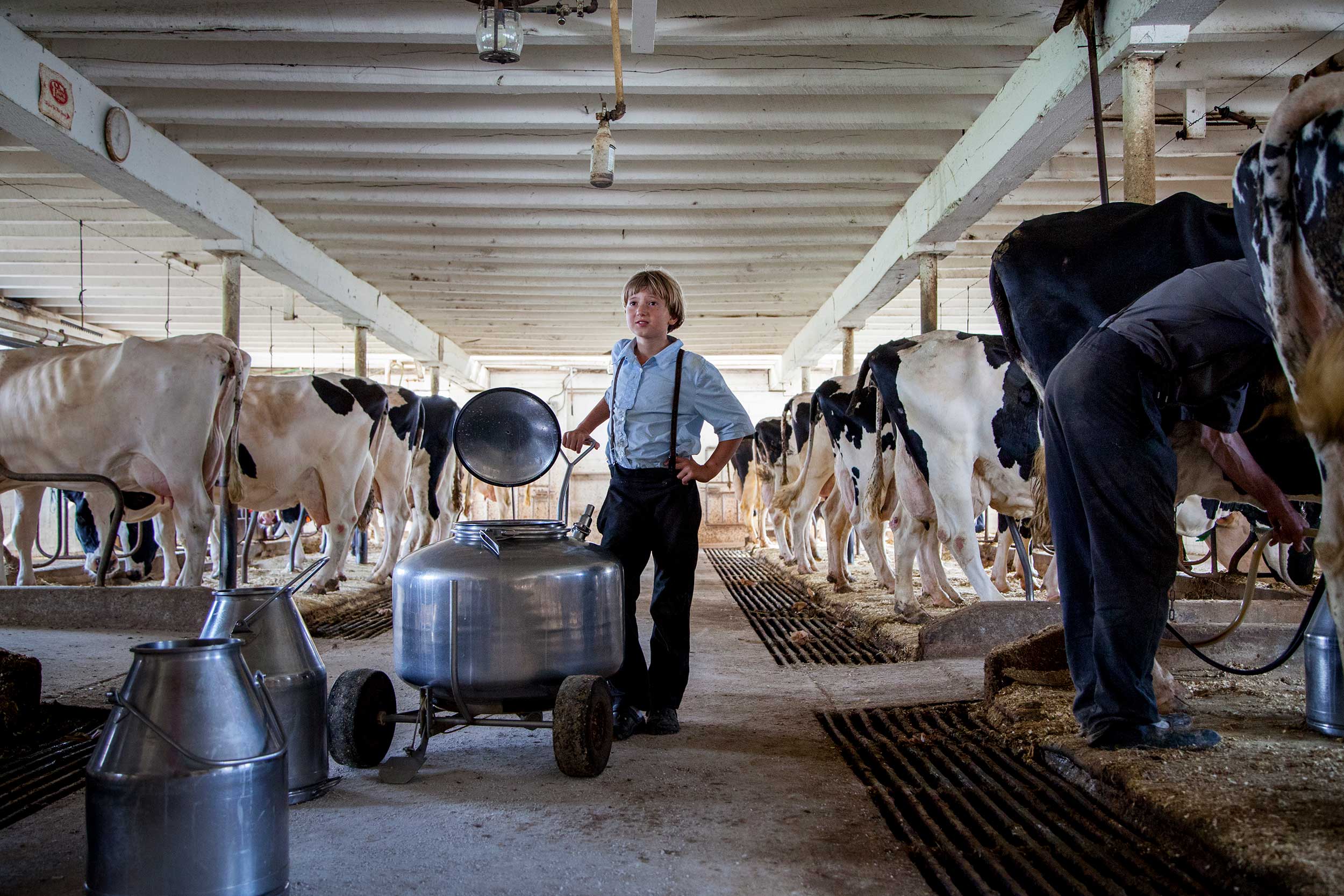Atelier
How to Navigate New Tech Like the Amish
The Amish don’t hate technology — they’re just very choosy. We could all stand to learn from their approach.
Text—Josiah Neufeld
Photos—Ashley Gilbertson
It’s easy to cast the Amish, with their horse-drawn buggies and buttoned collars, as fusty holdouts against everything new and modern.
But the Amish are more open-minded than we tend to realize. They don’t automatically shun new technology. Instead, when an innovation comes along, district councils carefully consider it, and the community votes on whether to accept it, based on a few guiding principles.
Over the last hundred years, the Amish have rejected personal telephones, televisions, motorized vehicles, and the internet — but they have embraced propane-powered lights and refrigerators. They’ve also branched out from farming to making elegant hardwood furniture in carpentry shops equipped with power tools that run on air compressed by gas engines.
Jameson Wetmore, an associate professor at Arizona State University’s School for the Future of Innovation in Society, has been studying the Amish for 20 years, and he thinks they may be better at adapting to technology than the rest of us. They’ve found a way to balance the values of their culture with the advantages of new technology.
Rather than simply reacting to social pressure and marketing — which often play on our impulses and fears — when making technological choices, we could all stand to learn a few things from the Amish approach.
Here are three strategies we can adopt from the Amish, for when the next digital toy or viral app comes along to devour our time and attention.

– 1 –
Define your values.
It’s difficult, if not impossible, to untangle the Amish philosophy on technology from their religious faith, says Wetmore. Menno Simons, the 16th-century Dutch priest whom Amish and Mennonites consider a spiritual father, told his followers to “rent a farm, milk cows, learn a trade if possible, do manual labour.” These simple imperatives express the core ethics of Amish society.
When considering a new technology, the Amish ask themselves whether it aligns with their values, whether it will protect their identity, and whether it will strengthen or weaken their social relationships.
Nothing stops us from applying these principles to our non-Amish lives. Whenever we are presented with a phone upgrade, a novel piece of wearable tech, a new home security system, or something else that proposes to improve our “user experience,” we too should pause and consider what it means for our identities and social relationships.
Will this new technology deepen our connections — to each other, to ourselves, to nature — or erode them?

– 2 –
Slow down and reflect.
We can’t simply imitate the Amish, of course. But as individuals, families, businesses, and social groups, we can draw inspiration from the Amish approach as we consider how often and in what way we use things like smartphones, cars, and social media. Jameson Wetmore reminds us:
“We’ve created a culture that thrives on new technologies as fast as possible. We’re starting to recognize the social and ecological costs of our technologies. As our tools pull us along, we should ensure we’re still holding the reins.”
Technologies aren’t value-free — they come with built-in morals and objectives that aren’t always easy to recognize. Recent confessions by Silicon Valley tech executives, such as Facebook’s first president, Sean Parker, have revealed how social media platforms were designed to exploit vulnerabilities in the human mind, rewarding knee-jerk reactions based on anger and fear.
By taking time to hold new technologies up to the light of our personal and community values, we can resist the pressure to always keep up with their breakneck pace.
– 3 –
Imagine alternatives.

A horse and buggy is a clear and recognizable symbol. It also slows down the pace of life and encourages interdependence. But it’s not uncommon for Amish families to take the bus to visit relatives in another state or even accept a ride to the grocery store from a non-Amish friend, says Wetmore. These exceptions are allowed because they strengthen community ties without sacrificing Amish identity.
The Amish believe that if they embraced the internet, their society would simply crumble, says Wetmore. But that doesn’t mean they don’t make use of it. Instead of spending time on the web themselves, they hire third parties to market and sell their furniture online.
The Amish watch our society and note how our technologies affect us, says Wetmore. “The Amish are really, really careful in making sure that the technologies they use create the world they want to live in. And I don’t think most of us are very good at that.”
The Amish don’t hate or fear new technology. They’re just choosy about what they embrace and how. Learning from their example, we could welcome technologies that help us live by our principles, reject those that don’t, and find workarounds for things that are useful but problematic.
By taking a more Amish approach, we stand to deepen our relationships, relax more, and nourish our connections with the natural world.
Josiah Neufeld is a Winnipeg-based magazine journalist who writes about West Africa, religion, climate change, parenting, and other topics. His essays and journalism have appeared in the Globe and Mail, the Walrus, Broadview, and Utne Reader. His reporting on rising seas in Bangladesh received an Amnesty International Canada Media Award.
—
Do you mostly experience nature online, or in real life?
Green Screen casts a curious, comical, and commonsense gaze upon our relationship with tech and nature.
Get your copy now!Never Miss Another Issue
Two issues per year
25% OFF previous issues
Free Shipping in Canada